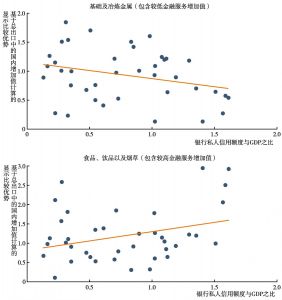章节
服务贸易和全球价值链
关键词
作者
[美]杜大伟(David Dollar) David Dollar(杜大伟),布鲁金斯学会约翰·桑顿中国中心高级研究员。
[巴]若泽·吉勒尔梅·莱斯(José Guilherme Reis)
王直 ,对外经济贸易大学全球价值链研究院教授、博士生导师,海外院长,美国乔治梅森大学政策、政府和国际事务学院资深研究员。1985年1月,获中国农业科学院硕士学位;1990年6月,获俄亥俄州立大学硕士学位;1994年11月,获明尼苏达大学博士学位。1985年1月-1987年7月,任中国农业科学院农业经济研究所研究员。1994年7月-1995年8月,任世界银行世界发展报告顾问。1995年9月-1997年9月,任明尼苏达大学应用经济学系副研究员。1997年10月-1999年7月,任普渡大学全球贸易分析研究中心经济学家。1999年7月-2002年7月,任美国农业部经济研究局经济学家。2002年7月-2004年3月,任乔治梅森大学计算科学学院高级研究员。2004年5月-2005年8月,任美国商务部经济分析局经济学家。2005年8月-2011年7月,任美国国际贸易委员会研究部高级国际经济学家。2011年7月-2016年3月,任美国国际贸易委员会研究部资深国际经济学家。2016年4月,任对外经济贸易大学全球价值链研究院海外院长。
检索正文关键字
章节目录
-
一 服务在全球价值链中发挥什么作用?
- (一)服务业的全球价值链
- (二)服务在全球价值链中的连接作用
- (三)服务在全球价值链中作为外包投入
- (四)服务在全球价值链中作为内部投入
-
二 在全球价值链中如何测量服务的参与度
- (一)增加值贸易统计涵盖了服务业在全球价值链中作为连接、外包投入和最终产品的作用
- (二)现存增加值贸易统计数据无法完全反映跨境商业机构贸易
- (三)服务在全球价值链中作为内部投入
-
三 全球价值链中服务的新兴模式
- (一)全球价值链中服务的模式
- 1.服务在增加值贸易中的比例不仅很大而且持续上升
- 2.出口中所包含的服务推动服务贸易的比例增长
- (二)出口中服务增加值的比例在不同国家间差别很大
- (三)出口中服务增加值的比例在不同行业间差别也很大
- (四)为什么服务增加值在出口中的比例不断上升?
- (五)增加值分析的局限:内部服务在制造业中起很大作用
- (一)全球价值链中服务的模式
-
四 服务对全球价值链的意义
- (一)对生产率的影响
- (二)对比较优势的影响
- (三)服务的直接和间接增加值出口
-
五 政策意义
- (一)各国政策对国际服务贸易的壁垒
- (二)国际合作和全球价值链中的服务贸易
- (三)出口国承担监管责任的一个例子:数据流
- 六 结语
相关文献
查看更多>>>












